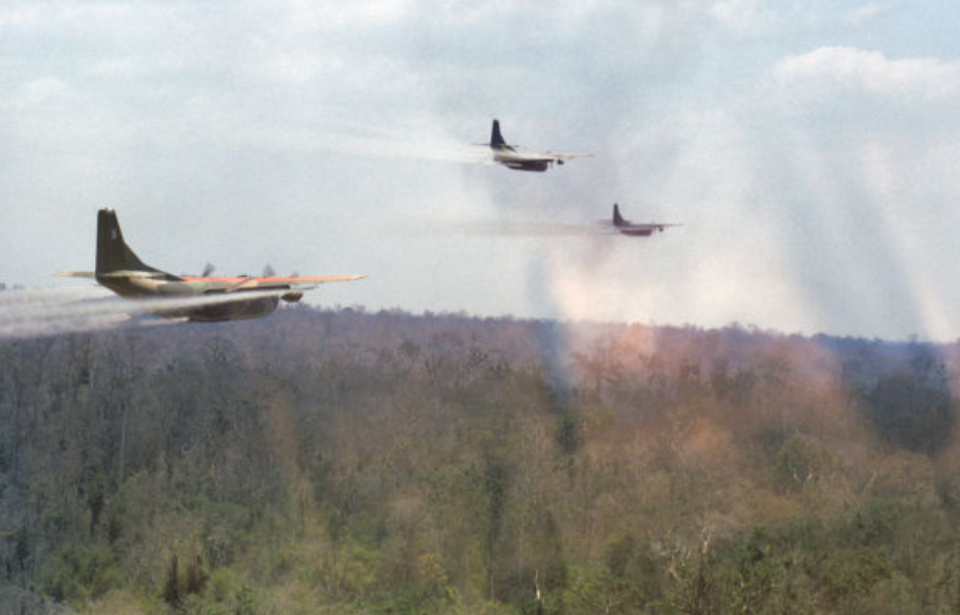Beginning in 1962 and continuing until ’71, the US military, under the approval of President John F. Kennedy, sprayed well over 19 million gallons of herbicide and defoliants across more than five million acres of land in Vietnam, Laos and Cambodia. It was officially known as Operation Ranch Hand, and the intention was to force the North Vietnamese and Viet Cong from their hiding areas. The effects of this chemical warfare are still noticeable to this day.
Defoliants as a ‘legal tactic of warfare’
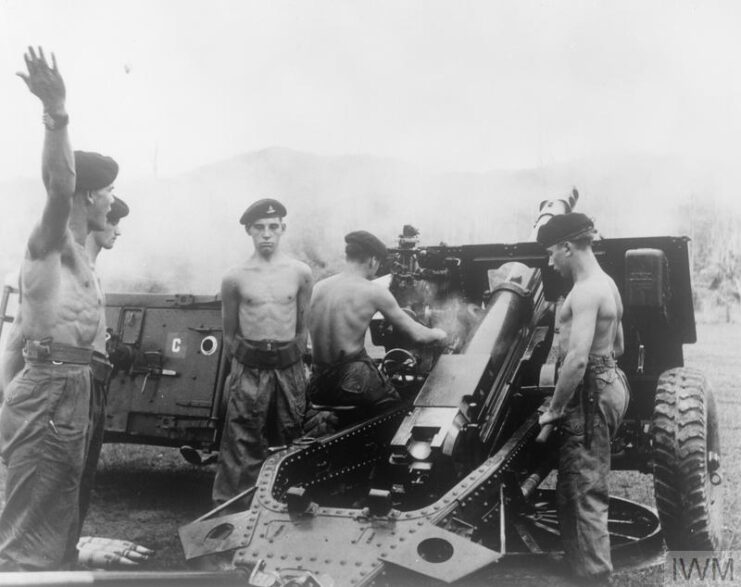
During the Malayan Emergency from 1948-60, the British military considered using defoliants against the Malayan National Liberation Army (MNLA). Tired of roadside ambushes that put Commonwealth troops at risk, the idea was that destroying vegetation would give the guerillas fewer places to hide. As well, the chemicals would destroy the crops used by the MNLA for food.
It’s reported that many of the Commonwealth soldiers who handled these chemicals suffered serious exposure, and upwards of 10,000 MNLA guerrillas and civilians were harmed by their effects. In terms of the environment, soil erosion has been linked to the extended use of these herbicides throughout the conflict.
While this proved an expensive and life-altering endeavor for all involved, it caused the Kennedy administration to believe that the use of such chemicals in warfare was legal.
Agent Orange
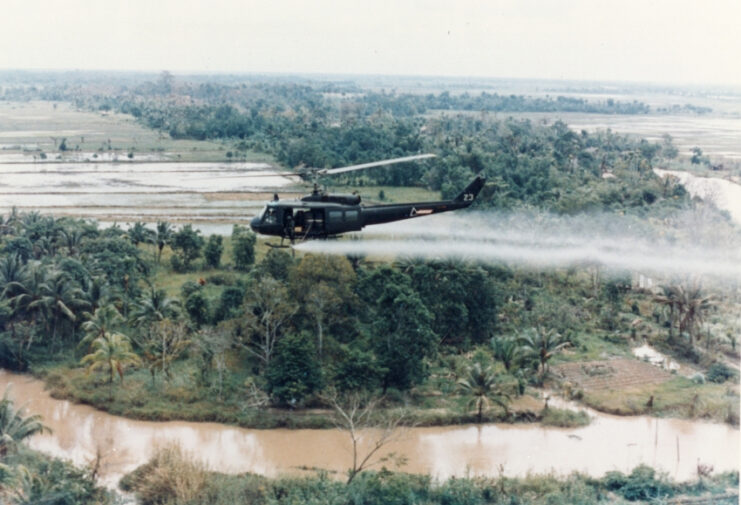
The most frequently used “Rainbow Herbicide” during Operation Ranch Hand was Agent Orange, which was a mixture of equal parts 2,4,5-T and 2,4-D. The result of mixing these two chemicals unintentionally created a highly toxic dioxin known as TCDD.
Prior to the Vietnam War, Agent Orange was primarily used in agriculture, and it was also being sprayed on vegetation that grew around railroads and powerlines. When the idea for Operation Ranch Hand came about, the US military obtained a whopping 20 million US gallons – a staggering amount that accounted for 60 percent of the herbicides used in Vietnam.
Agent Orange was named for the barrels the herbicide came in, as were the other chemicals used throughout Operation Ranch Hand, such as Agent Blue and Green (used against crops) and Agent White (deployed when Agent Orange wasn’t available).
Following the decade-long operation, Agent Orange was banned by the United States, with all remaining stock sent to Johnston Atoll, where it was destroyed.
Launching Operation Ranch Hand
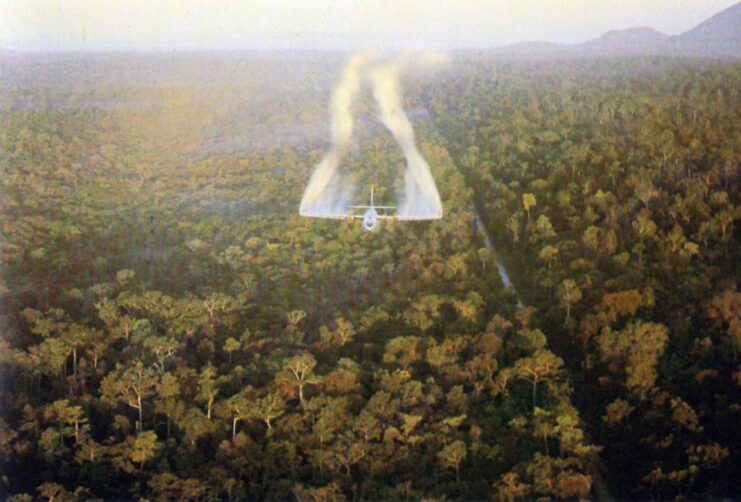
The idea for Operation Ranch Hand came following a request from South Vietnamese President Ngô Đình Diệm to help eliminate the jungle hideouts of the North Vietnamese and Viet Cong. That August, the United States helped the Republic of Vietnam Air Force conduct herbicide operations, with the success prompting President John F. Kennedy to authorize a larger operation under the US Air Force, with assistance from the US Chemical Corps.
The chemicals deployed as part of Operation Ranch Hand were sprayed via pumps attached to aircraft (Fairchild C-123 Providers and Douglas C-47 Skytrains), helicopters, boats and trucks – even servicemen carried pumps on their backs. While all operations initially had to be approved by Kennedy, he eventually gave that discretion to the Military Assistance Command, Vietnam and the US Ambassador to Vietnam.
The first official use of herbicides in Vietnam outside of tests began in mid-January 1962. Not only were enemy locations such as hiding places, roads, waterways and crops targeted, but also the perimeters of American camps and airfields to keep them tidy.
A misguided belief the chemicals were harmless to one’s health
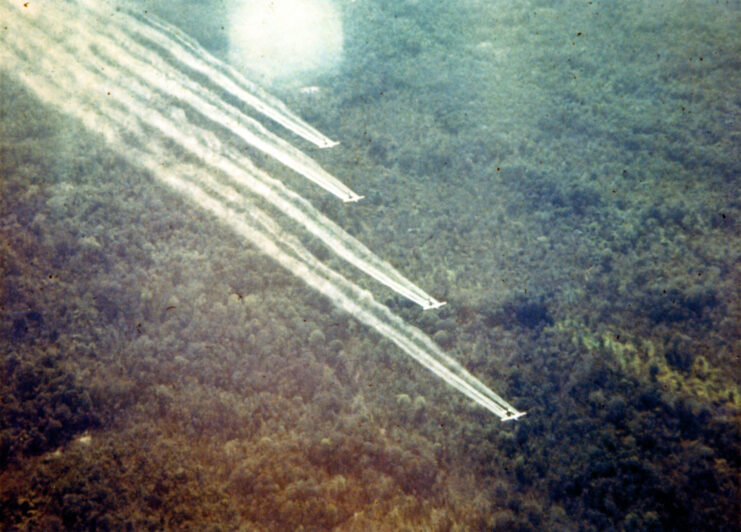
During the time herbicides were sprayed in Vietnam, between 2.6 and 3.8 million servicemen were deployed to fight the war. When Operation Ranch Hand was launched, the idea that the military’s own troops would be impacted was never considered, meaning no masks or safety equipment were worn.
Writing to Sen. Thomas Daschle (D-SD) in 1988, James Clary, a researcher who worked on the operation, explained, “When we initiated the herbicide program in the 1960s, we were aware of the potential damage due to dioxin contamination in the herbicide. However, because the material was to be used on the enemy, none of us were overly concerned. We never considered a scenario in which our own personnel would become contaminated with the herbicide.”
It’s since been proven this couldn’t be further from the truth. The total number of service members exposed to the spray, residue, contaminated groundwater and/or soil can’t possibly be measured, but it’s believed that over two million Americans were affected by their ill-effects.
Operation Ranch Hand forever changed the region
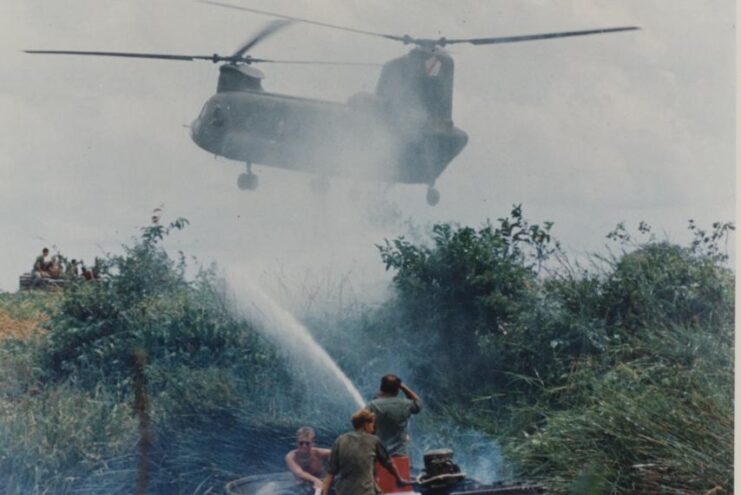
Throughout the decade herbicides were sprayed on Vietnam and the surrounding countries, 20,000 sorties were flown over 6,542 missions. According to reports, 24 percent of South Vietnam was sprayed, with 500,000 acres of food crops and five million acres of mangrove trees destroyed.
In Vietnam, it’s been reported that at least 400,000 people died as a result of Operation Ranch Hand and the US military’s use of herbicides during the war, with 4.8 million believed to have been exposed to Agent Orange, in particular. Much of these numbers have been provided by the Vietnamese government, with American officials deeming them unreliable.
What wasn’t considered was the lasting impact of chemicals like Agent Orange on the environment – in particular, on waterways and the food chain. Those not directly exposed to the spraying, and even those who were, found themselves injesting the various herbicides through the likes of meat and fish.
Operation Ranch Hand was also a breach of international law. Under the 1925 Geneva Protocol, the use of chemical and biological weapons in war is prohibited – and many approached the United Nations (UN) to put a stop to the atrocities being committed by the United States. However, the country’s delegation defeated most of the resolution.
Operation Ranch Hand’s impact on Laos and Cambodia
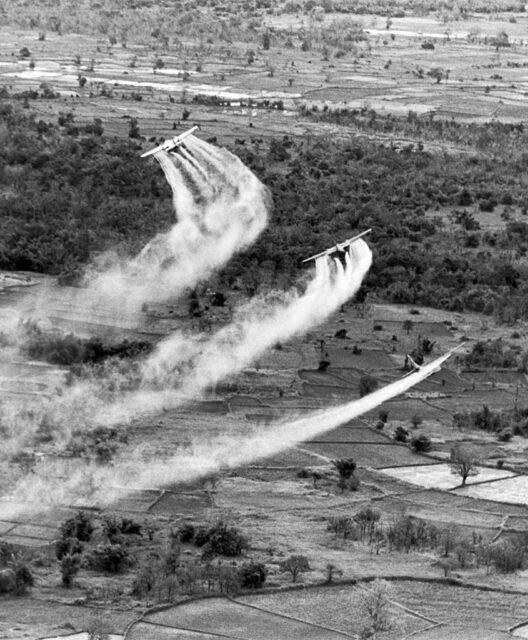
Laos and Cambodia were neutral nations during the Vietnam War, meaning any form of warfare – especially chemical – would be considered an illegal act. Aware of this, the North Vietnamese used border regions to hide out and move supplies, and this would become a central part of the US military’s efforts in the conflict going into the 1970s.
Very little testing and research has been done regarding the long-term effects of herbicides in Laos, but the birth defects found in small villages is similar to the total reported in Vietnam, with many of those affected being the children and grandchildren of the individuals who were forced to live through Operation Ranch Hand.
Some 600,000 gallons of herbicide dropped on Laos – in particular, the more toxic Agent Purple, which was three times stronger than Agent Orange. The information regarding the use of herbicides in Cambodia is even more scarce, with one particular event in 1969 drawing the most attention. A rubber plantation in Kampong Cham province was targeted, with 173,000 acres sprayed.
While this is the most widely-reported incident, Cambodian authorities had alleged the Americans were using chemical warfare against their country as early as 1964.
Birth defects in the descendants of American veterans
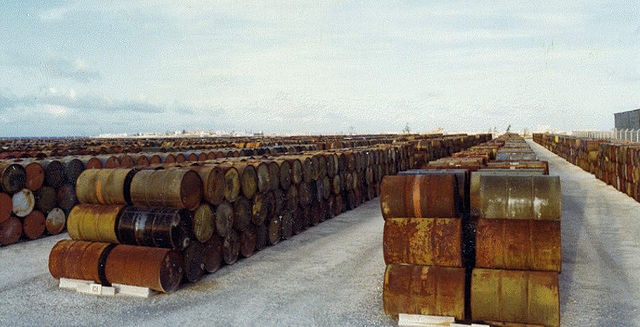
The offspring of many veterans who served in Vietnam were born with physical defects, such as spina bifida and other spinal disorders, extra fingers and toes, fused digits and diseases, including several types of cancer. Parkinson’s Disease, nerve and muscle disorders, Type 2 Diabetes and heart disease were also reported, and many children suffered psychological disorders.
Vietnam veteran Mike Ryan was exposed to the herbicides and fathered a daughter who was born with spina bifida, deformed extremities, a hole in her heart and no lower digestive tract, among a host of other problems. There were no genetic problems reported on either side of the family, and the Ryans were considerably healthy, with no drug or smoking histories.
The family made their plight public after hearing of more children with similar problems. In 1980, then-President-elect Ronald Reagan met with the Ryans over their concerns and, later, his administration worked to block their class-action lawsuit, which resulted in US District Judge Jack Weinstein ruling that direct payments could only be made to disabled veterans or survivors of those who’d died. The ruling conspicuously left out their descendants.
Fellow veteran Royal Gee had a daughter prior to his service in Vietnam who is completely healthy and one born after his return. She suffered from cysts, joint problems and an immune system disorder. This led him to tell ProPublica, “They say it has nothing to do with my service in Vietnam and it stops right there. There’s got to be a reason.”
How has the US government responded?
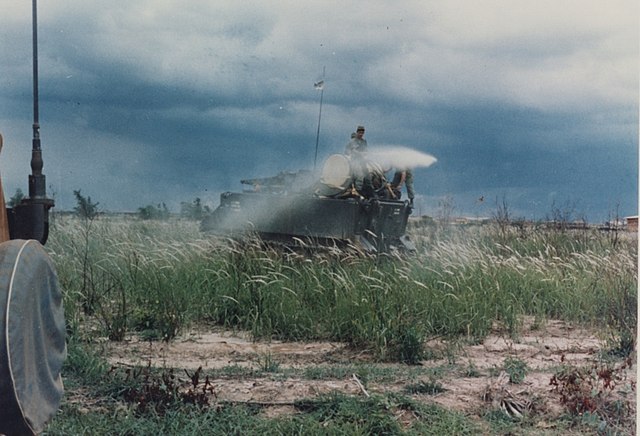
Hundreds of studies have been conducted since the Vietnam War and many point to a connection between the use of herbicides and birth defects. In 1979, a class-action lawsuit was filed on behalf of 2.4 million veterans who’d been exposed to Agent Orange during their service, which led several of the companies that supplied the government to pay $180 million in compensation. This was followed by many other lawsuits, some of which were geared toward the government.
The Institute of Medicine (IOM) over the years has recommended the US Department of Veterans Affairs “review all the possible cognitive and developmental effects in offspring of veterans,” including “the possibility of effects in grandchildren.” However, it’s only in the last few dacades that the VA has actually taken step to help those imapcted by the herbicides that were sprayed during Operation Ranch Hand.
More from us: 5,000 War Dogs Served in Vietnam and Almost All of Them Were Left Behind
Want War History Online‘s content sent directly to your inbox? Sign up for our newsletter here!
In 1991, US President George H.W. Bush signed the Agent Orange Act into law, mandating that several of the ailments associated with the use of herbicides in Vietnam be treated as having resulted from veterans’ wartime service.
